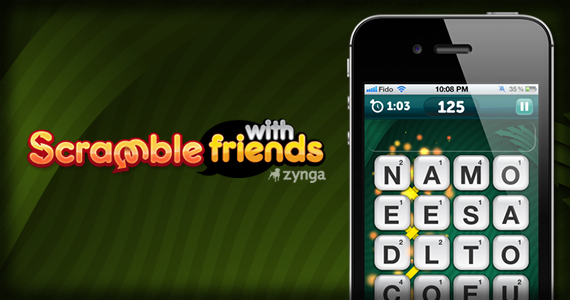This social word game review examines Zynga's Scramble With Friends, a Boggle-inspired iOS application featuring two-minute turn-based gameplay, social network connection, and power-up monetization systems that exemplified the peak period of casual mobile gaming when simple mechanics combined with social features could generate massive user engagement and revenue. Marc Angeli evaluates the app's quick-play design philosophy, multiplayer connectivity through Facebook and Twitter, and freemium monetization model including power-ups, coins, and ad-removal options during Zynga's dominance of social gaming markets. The review captures the strategic shift toward bite-sized gaming experiences optimized for busy professionals and social connectivity rather than traditional single-player depth or complexity.
The gameplay mechanics analysis covers the 4x4 letter grid system where players connect adjacent letters to form words within two-minute time limits, emphasizing accessibility and rapid engagement over learning curves or strategic depth. The social connection evaluation details Facebook and Twitter connectivity for friend discovery, random opponent matching, and cross-platform score sharing that leveraged existing social networks for user acquisition and retention. The monetization assessment examines the coin-based power-up system including Freeze, Inspiration, and Scramble abilities that provided gameplay advantages while maintaining free-to-play accessibility, representing early mobile gaming monetization strategies that balanced user experience with revenue generation.
The strategic implications evaluation encompasses Zynga's "With Friends" franchise success during the period when simple, socially-connected games dominated mobile app stores and showd the viability of casual gaming as a mainstream entertainment category. The technical performance analysis highlights server stability and quick loading times that distinguished quality mobile gaming experiences from poorly optimized competitors, establishing user expectations for responsive gameplay and reliable connectivity. The competitive positioning covers differentiation from traditional word games through social features, time constraints, and power-up systems that modernized classic gameplay for mobile-native audiences.
This Scramble With Friends review represents the peak of social casual gaming when simple mechanics combined with network effects could create highly engaging and profitable mobile experiences before market saturation and platform algorithm changes reduced organic discovery and increased user acquisition costs. Looking back 13+ years later, the two-minute turn format pioneered influenced modern mobile game design across genres, establishing patterns for commute-friendly gaming experiences that respect users' time constraints while maintaining engagement through social competition and progression systems. The freemium power-up monetization model documented became standard practice for mobile games, though later addations became more sophisticated with subscription services, cosmetic customizations, and progression acceleration rather than direct gameplay advantages. The social network connection approach validated proved essential for viral growth, though privacy concerns and platform policy changes later reduced the effectiveness of automatic social sharing and friend discovery mechanisms. The word game mechanics simplified from traditional Boggle established patterns for mobile adaptation of classic games that prioritize accessibility and quick understanding over complex rule sets or strategic depth. The "With Friends" branding strategy showd the power of franchise development in mobile gaming, though Zynga's later struggles illustrated the challenges of maintaining innovation and user engagement across multiple similar titles without platform-level advantages. The server stability emphasis documented became critical as mobile gaming shifted toward real-time multiplayer experiences, live events, and cloud-based progression systems that require consistent connectivity and responsive performance to maintain user satisfaction and competitive integrity. This moment captures the transitional period when mobile gaming evolved from single entertainment toward social experiences that leveraged network effects for engagement, retention, and monetization, establishing patterns for modern mobile gaming that emphasize community building, social competition, and accessible gameplay mechanics over traditional single-player depth or complexity.
This summary was created by Dave Rogers. The original post was written by Marc Angeli and published on March 1, 2012.
If you'd like to view the original post, you can find it here.
